
Colombo, Sri Lanka — Transport a Sri Lankan citizen from the early 1990s to the past week of the island’s politics, and you may just break their brain.
Back then, the Janatha Vimukthi Peramuna (JVP), the Marxist outfit that the country’s new president, Anura Kumara Dissanayake, now leads, was reviled in swaths of southern Sri Lanka for having twice attempted violent revolution. Between 1987 and 1989, the JVP unleashed new horrors upon a nation already rent by ethnic war in the north.
In the years that followed that uprising, Sri Lanka’s third president, Ranasinghe Premadasa, allegedly ran death squads that cut down young men that Dissanayake – already part of the JVP cadre – would have considered his sahodarayo, the Sinhala word for brothers. There are stories, often told, of the corpses of JVP comrades floating down rivers, a chilling warning from the state to match the brazenness of the JVP’s own killings.
In the scenic village of Batalanda, meanwhile, a young minister, Ranil Wickremesinghe — the man Dissanayake would replace as president three decades later — was allegedly overseeing a detention camp for JVP activists. Many are believed to have been tortured and killed there.
So soaked in blood is Sri Lanka’s modern history, that though the details of these violent skeins have been blurred in whirls of denial, propaganda and cynical revisionism, these stories, and the dread they evoked, have endured, and shaped the island’s politics for decades.
And yet, in September 2024, many of the southern electorates the JVP of the late 1980s had terrorised turned out for the party’s leader, Dissanayake, in the presidential election. He comfortably defeated his opponents: Sajith Premadasa, the son of Ranasinghe, and Wickremesinghe himself.
In the week since his election, Dissanayake has struck a remarkably gentle tone in his public addresses.
“We have asked our supporters to refrain even from lighting fireworks to celebrate our victory,” Dissanayake said in his first, off-the-cuff, address. This was to avoid upsetting defeated political opponents. “We must end forever the era in which we are divided by race, religion, class, and caste,” he said days later in a longer, prerecorded speech. “We will embark instead on programmes that enshrine Sri Lanka’s diversity.”
Although it is not uncommon for new leaders to speak in such platitudes, it is worth noting that Sri Lanka’s last elected president, Gotabaya Rajapaksa, had endorsed Sinhalese chauvinism in his inauguration speech in November 2019.
Dissanayake, by contrast, had tried to lower the political temperature even during his campaign, amid a bitterly-fought three-cornered race. “Let’s stop this ugly political culture of harassing political opponents,” he had said in his final rally, in Colombo. “In a democracy, our right is to make our case to them; perhaps they will change their minds. But even if they do not, theirs remains the right to work for a political force of their choosing.”
Since his election, he has installed Sri Lanka’s first female prime minister not coming from a dynastic political family – Harini Amarasuriya. Amarasuriya is not a member of the JVP, but of the National People’s Power (NPP), which is the moderately left-wing coalition under whose banner she and Dissanayake contested. Dissanayake has also appointed a minority Muslim, Hanif Yousuf, as governor of Sri Lanka’s most populous Western Province.
To understand how an island riven with division for much of its post-independence history has arrived at this moment, we must go back to a tumultuous 2022. Dissanayake has been shrewd and has chosen his political moments skillfully. But he is far from the architect of the wave that has swept him into Sri Lanka’s highest political office.
‘The struggle’
It was the power cuts in the sticky heat of 2022’s March and April that tipped the country into tumult. The protests against then-President Rajapaksa swelled through those early months. Outside the grand, colonnaded Presidential Secretariat near Colombo’s Galle Face Green, thousands gathered nightly, like white blood cells rounding on a pathogen.
The movement soon gained the name aragalaya in Sinhala and porattam in Tamil – words that translate essentially to “the struggle”. Within weeks, the movement grew swiftly all over a country strapped for fuel, gas for cooking, and electricity, after the rupee tumbled. A smattering of tents outside the primary aragalaya site swiftly expanded into a village featuring a theatre, a library, first aid stations, an art gallery, a small solar power station, and later, a cinema tent.
During Ramadan, in the first aragalaya month, Muslims broke fast with Sinhalese, and Tamils, the first installations in this village having been canteens at which food was provided free. Not only had Rajapaksa’s campaign been virulently Islamophobic in the months that followed 2019’s Easter attacks, but the government he headed had also banned Muslim burials during the pandemic, claiming baselessly that decaying bodies carrying the COVID-19 virus could contaminate groundwater. Muslims were forced to cremate their dead.
Where Rajapaksa’s government had refused to recognise the national anthem in Tamil, the Tamil version was sung at the Galle Face protest site. Where the government celebrated its victory over Tamil separatists on the May 19 anniversary, protesters made a point of commemorating the deaths of Tamil civilians during the vicious conclusion to the fighting instead. There was, in the months from April to July, also a Gay Pride Parade, a Catholic-led demand for answers over the Easter attacks, and substantial participation by Sri Lankans with disabilities.
The aragalaya site was hardly a utopian space, and there was in fact significant internal opposition to many of these events, plus widespread instances of homophobia, transphobia, and sexual harassment. But it was nevertheless the most intensive public airing of progressive ideas perhaps since the country’s independence. Radically reformist visions for Sri Lanka were not merely tolerated, they were often discussed, refined, and on occasion, incubated.
That the initial protests were devised in direct and virulent opposition to the Rajapaksas allowed activists, civil society and citizens the rare intellectual freedom to take aim at the entirety of the Rajapaksas’ political project, which included the Sinhalese-Buddhist nationalism of which they had been the most conspicuous champions in the 21st century. Many of these critiques were disseminated rapidly and emphatically on social media but also found expression in mainstream press.
Perhaps the most consequential idea was that Sri Lanka had inflicted upon itself a “74-year curse”. The “curse” essentially, was the population having allowed political elites, largely organised into Sri Lanka’s two main historic parties, to fleece the island in turns since it gained independence from the British in 1948.
In this formulation, the Sri Lankan populace had allowed itself to be divided by and subservient to the interests of the few. They were not merely the ruled, but the fooled. It did not escape attention that between the power wielded by five families – the Senanayakes, the Bandaranaikes, the Jayawardene-Wickremesinghes, the Rajapaksas, and the Premadasas – almost the entirety of Sri Lanka’s modern political history is traversed.
A nation on a short fuse
That Sajith Premadasa, the leader of the opposition against Rajapaksa’s failing government, could not seize the political opportunity the protests created, was unsurprising. Though his father, the third president, had come from modest means, Sajith had studied in boarding school in the United Kingdom and interned for a United States politician. In leading his breakaway segment of the United National Party – historically the centre-right of Sri Lanka’s two leading parties – his perceived status among the political elite had become reified. So when he arrived at the main aragalaya site with the intention of showing solidarity, he promptly — and aggressively — found himself driven back into his vehicle, the protesters refusing to tolerate the presence of a mainstream politician.
Dissanayake, meanwhile, had positioned himself as an anti-establishment voice long before the protests began. Though as a youth he had sold cigarettes and toffees on the trains that passed through his village in the North Central province, he hailed essentially from the rural middle class. It is to those voters that he has always best appealed. Though in 2019, he had received a mere 3 percent of the presidential vote, he had nevertheless enjoyed soft support in much of the south.
Since becoming the JVP’s leader in 2014, he gained a profile not only for speaking out against corruption and the excesses of politicians in parliament but also as a skilled orator in Sinhalese. Young southerners, especially, had been drawn to his relaxed speaking style, and quick, dry wit; where political opponents often attacked him in screeching diatribes, Dissanayake could dispatch them with one-line zingers.
Perhaps his most astute political moment came in 2019, when by forming the NPP, he shunted his own left-wing party substantially towards the centre, making them a viable alternative to the traditional outfits in election cycles to come.
Though in attacking the political establishment he has connected with the disillusionment towards the elite, he has also in other ways been among the most inoffensive of Sri Lanka’s politicians. He has promised greater equality to minorities, but affirmed Buddhism’s “foremost place” in Sri Lankan life, as laid out in the constitution. He spoke out against the onerous conditions imposed on many families by Sri Lanka’s deal with the International Monetary Fund but affirmed his commitment to pursuing a renegotiated IMF deal. He also courted international support, taking special care to signal to India that his leadership would not be a threat. Much of this would have been anathema to the JVP of past decades.
If Dissanayake is tentative, it is perhaps because he has discerned the precarity of his political position. The forces that have brought him to the presidency have tended to punish both excess and failure. In 2015, Sri Lanka tossed out Mahinda Rajapaksa – Gotabaya’s brother and arguably the most charismatic Sinhalese politician in generations – when he sought an unprecedented third presidential term. In 2019, the same electorate ditched the Maithripala Sirisena-Wickremesinghe alliance, whose ineptitude had allowed a security breach as great as the Easter attacks, and voted in Gotabaya Rajapaksa.
The protests of 2022 saw the seeding of a new political strain as Sri Lanka turfed out a third president in less than eight years. With Wickremesinghe also soundly defeated in elections, Dissanayake is Sri Lanka’s fifth head of state in 10 years. One week in, there is optimism that he could be the change Sri Lanka has been hankering for.
And yet, there is also the sense that Dissanayake is only the next experiment for Sri Lanka’s people – currently riding the crest of a wave that has built over the past decade, but just as easily capable of being swallowed by it. If economic conditions in homes worsen, either through macroeconomic instability or through the intolerable austerity of an IMF programme, Dissanayake and the NPP would be exposed.
Sri Lanka’s people feel more empowered to call for change than ever.


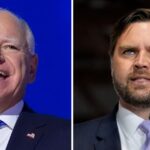
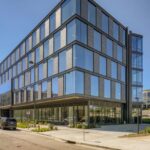



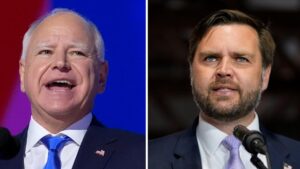
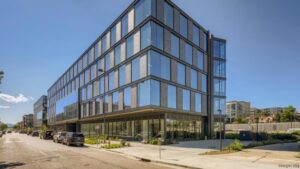
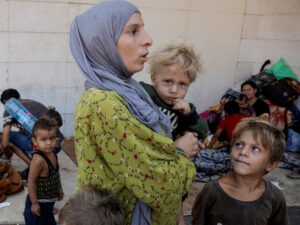
More Stories
Semi truck carrying dish soap rolls over in Golden
What time is the vice presidential debate?
Online sports betting giant to put US HQ in Denver, plans to hire hundreds